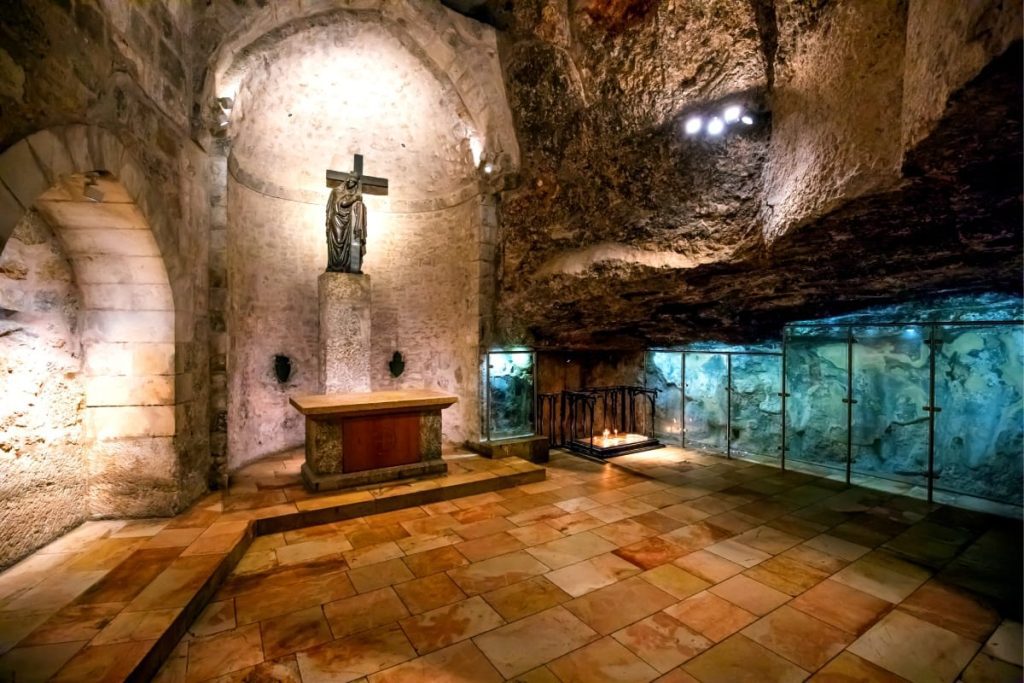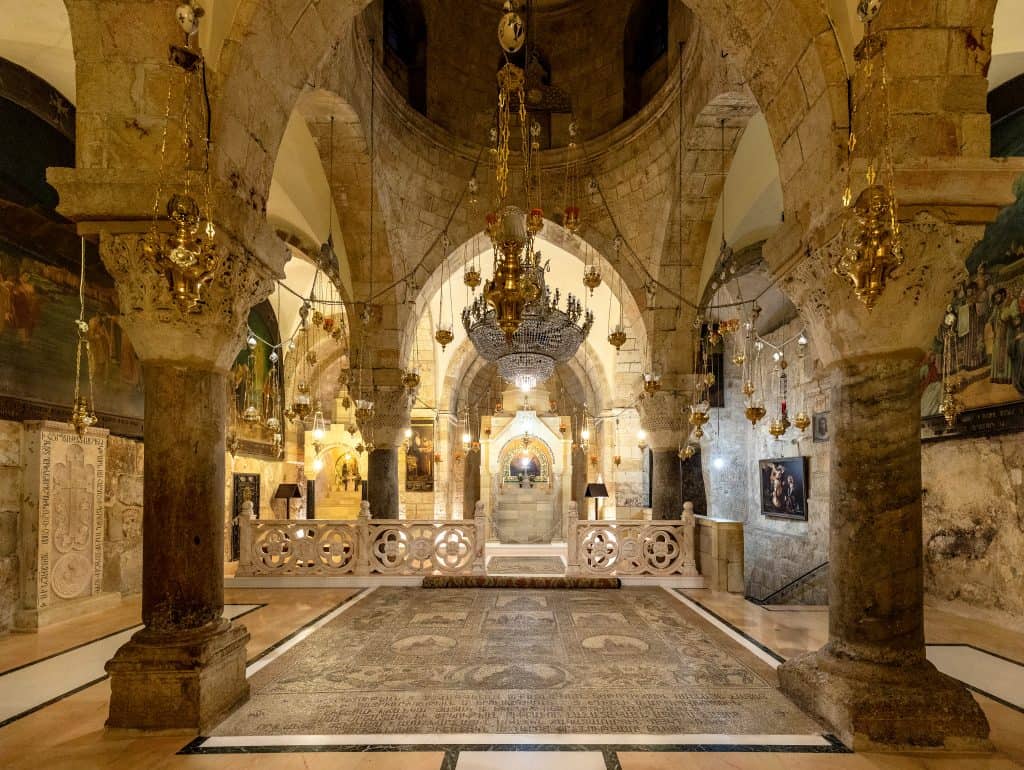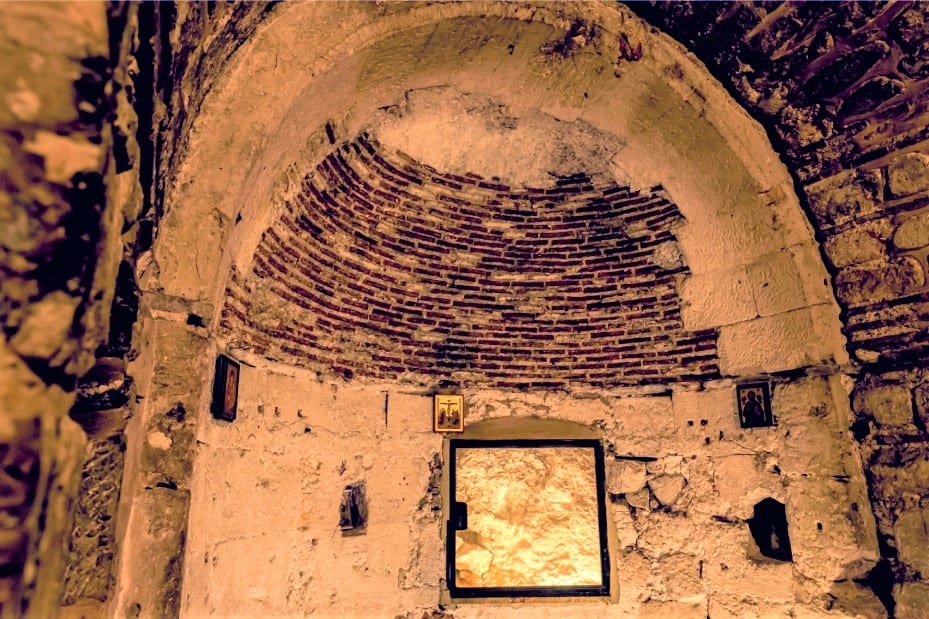The Chapel of Saint Helena is a beautiful and historic place of worship located in Jerusalem, Israel. This chapel is dedicated to Saint Helena, the mother of Emperor Constantine the Great, who is credited with discovering the True Cross of Jesus Christ in the fourth century.

So the Chapel of Saint Helena is located within the Church of the Holy Sepulchre, one of the most significant and sacred sites in all of Christianity. This church is believed to be built on the site where Jesus Christ was crucified, buried, and resurrected, making it a place of immense importance for Christians worldwide.
Christian Quarter Ultimate Guide

One of the most striking features of the Chapel is the altar, believed to be located directly above the spot where Saint Helena discovered the True Cross. This altar is adorned with beautiful decorations and is a place of great significance for Christians.
Chapel of Saint Helena And the True Cross
Furthermore, it is believed to be built where Saint Helena discovered the True Cross of Jesus. Helena was the mother of Emperor Constantine the Great, who converted to Christianity and made it the Roman Empire’s official religion. She’s, in a way, the first pilgrim to the Holy Land!

According to legend, Saint Helena traveled to Jerusalem and discovered the True Cross while on a pilgrimage. This event is considered a significant moment in Christian history, and the Chapel of Saint Helena is built on the site where it is believed to have occurred.
Chapel of Adam

So legend has it that the site of the crucifixion had been covered by the Romans, who had built a temple to Venus over it. Helena ordered the temple to be demolished and the ground beneath it to be excavated. During the excavation, three crosses were found buried in the ground, along with the inscription “Jesus of Nazareth, King of the Jews” in three languages (Hebrew, Greek, and Latin).
Overall, the Chapel of Saint Helena is significant because of its association with the discovery of the True Cross, its location within the Church of the Holy Sepulchre, and its beauty and historical significance as a place of worship.

